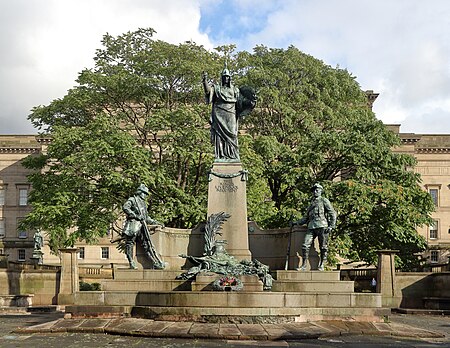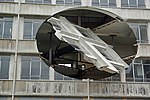Monument to the King's Liverpool Regiment

The monument to the King's Liverpool Regiment is a war memorial in St John's Gardens in the city centre of Liverpool, England. The memorial commemorates those members of the King's Regiment (Liverpool) who lost their lives on campaign in the Second Anglo-Afghan War (1878–1880), the Third Anglo-Burmese War (1885–1887) and the Second Boer War (1899–1902). It was funded by a public subscription and with the support of the Corporation of Liverpool. It was unveiled on 4 August 1905 by Field Marshal Sir George White. The monument is a rare example of a large-scale public regimental memorial from the pre-First World War era. Its central figure is that of Britannia with other statues showing soldiers of the regiment in 1685, 1743 and 1902.
Excerpt from the Wikipedia article Monument to the King's Liverpool Regiment (License: CC BY-SA 3.0, Authors, Images).Monument to the King's Liverpool Regiment
William Brown Street, Liverpool Ropewalks
Geographical coordinates (GPS) Address Nearby Places Show on map
Geographical coordinates (GPS)
| Latitude | Longitude |
|---|---|
| N 53.408916666667 ° | E -2.9815833333333 ° |
Address
The King’s Liverpool Regiment Monument
William Brown Street
L3 8EN Liverpool, Ropewalks
England, United Kingdom
Open on Google Maps








